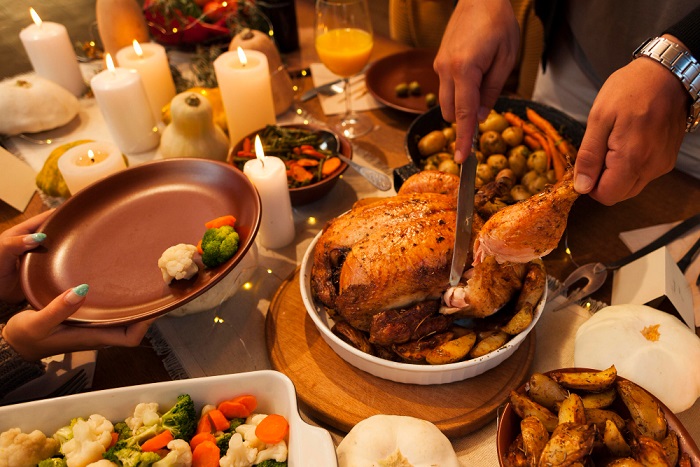
Using local produce and animals is a big part of Icelandic cuisine. The most popular ingredients include lamb, seafood, and rye bread.
Plokkfiskur is a fish stew that’s very popular among the locals. It’s typically smoked and served with mashed potato.
Puffin meat is also served in some restaurants. It’s usually smoked and has a strong flavor.
Fish and Seafood
Food is one reason to consider when choosing the best month to visit Iceland. The Nordic countries heavily influence Icelandic cuisine, and fish is a common ingredient. Lamb meat is another Icelandic food staple. The sheep are grazed in the highland pastures throughout summer, giving the meat a unique flavor and texture. It also has a good amount of omega-3.
The traditional meal is called plokkfiskur, a fish stew made from cod or haddock alongside mashed potatoes and raw onion with a creamy white sauce. It is a comforting meal for a cold day and can be eaten with rye bread or, as the locals do, spread on a piece of rugbraud to make a sandwich.
Due to the long and harsh winters, utilizing every part of an animal was common practice in Iceland throughout history. An example of this is said, which is a boiled sheep’s head. Today, said is often served as a snack with butter and a side of cooked carrots or cabbage.
Dried fish is another popular Icelandic food known as harddisk. It consists of cod, haddock, or wolf-fish fillets and is dried with salt. It is an excellent source of protein and can be taken on a backpacking trip as a high-protein snack. Another traditional fish dish is hakarl, which is fermented shark meat. It is a popular alternative to beef jerky and is best served with butter.
Dairy
Fish and seafood are staples of Icelandic cuisine, but much of the country’s population is also highly dependent on dairy products. These dairy products come in many forms, from the traditional lamb stew to smoked and fermented shark, usually served with a shot of Brennivin (the national spirit).
Sheep have been essential to Icelandic culture since the first settlers brought them here over 1,000 years ago. Icelandic sheep are known for their tender meat containing an unusually high omega-3, thanks to the fact that they graze on natural pastures from spring to autumn and only receive grain feed in winter.
Other traditional Icelandic foods include laufabraud, like a thin wafer of leaf bread decorated with patterns cut into it using a ridged cutting wheel before being fried crisp in oil. It is commonly used for filling sandwiches and, in addition to hanging knot, is a traditional food at Christmas dinners.
Small game, such as ptarmigan, puffin, and roast greylag goose, is another regular feature on the family table. The number of puffins is dwindling, and although hunting them is currently banned, the meat still features on the menu of some restaurants. Whale meat is also controversial as whale populations in the North Atlantic continue to dwindle.
Hakarl
During the medieval period, Icelanders needed easy access to fresh food. Therefore, they had to learn how to preserve it in a manner that would make it last. They used several methods, including fermentation, smoking, and salting. These traditions came from the neighboring Scandinavian countries where the Vikings hailed from.
One of the most iconic Icelandic foods is hakarl, which translates to shark meat. Usually, this is either the stomach or body of a Greenlandic shark that has undergone a unique fermenting process. This process aims to remove the poisonous juices (urea and trimethylamine oxide) from the shark that would kill people if consumed raw.
This type of shark is a local staple often served during thorrablot, an annual winter festival featuring adventurous dishes like ram’s testicles, puffin, and boiled sheep’s heads. During this time, locals will drink bljörn, dark and spicy schnapps.
This alcohol is a traditional part of the cuisine because it cuts through Karl’s strong flavor. In addition to hakarl, several other preserved foods are served during thorrablot, such as plokkfiskur (fish stew), smoked shark (hákarl), and skyr (Icelandic yogurt). Many of these foods were traditionally eaten in turf houses, where people sat on their beds while eating. The meals were served in Askar, low and bulging wooden staved casks with a hinged lid and two handles, which were often decorated.
Sheep’s Head
Sheep’s head (sometimes transliterated as svid) might sound odd to today’s travelers, but this traditional dish is a must-try while visiting Iceland. The sheep’s head is first singed to remove the fur, then cleaned and boiled until tender. The cooked meat is then sliced and served with mashed turnips, rhubarb jelly, or marmalade on slices of rugbraud, an Icelandic rye bread. Svid is especially popular during the mid-winter festival of Thorrablot, where it is included in a buffet of traditional Icelandic foods called Thorramatur.
The harsh climate of Iceland makes it essential to utilize every part of an animal. This is why fish, lamb, and horse are common in many country dishes. The locals are also known for maximizing the return on their food, so much of it is smoked, fermented, or salted.
These old techniques seem strange by modern standards, but it’s worth noting that Icelanders couldn’t buy fresh food from nearby countries in the past. As such, they adapted and made the most of what was available. These days, Iceland is a country that prides itself on its food, which is why you might find a few foods that might surprise you during your trip here. Enjoying kjotsupa, lamp soup, and hakarl, and said with plenty of Brennan, will help you get a feel for Icelandic cuisine.